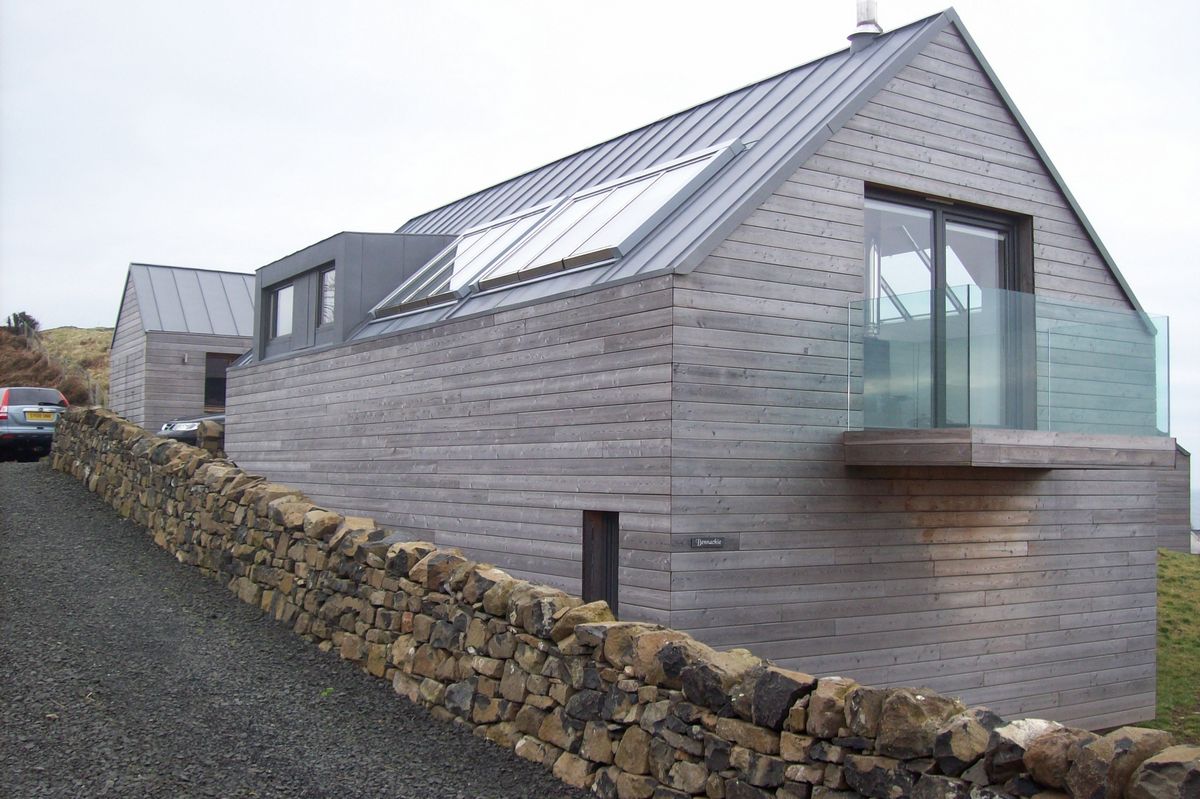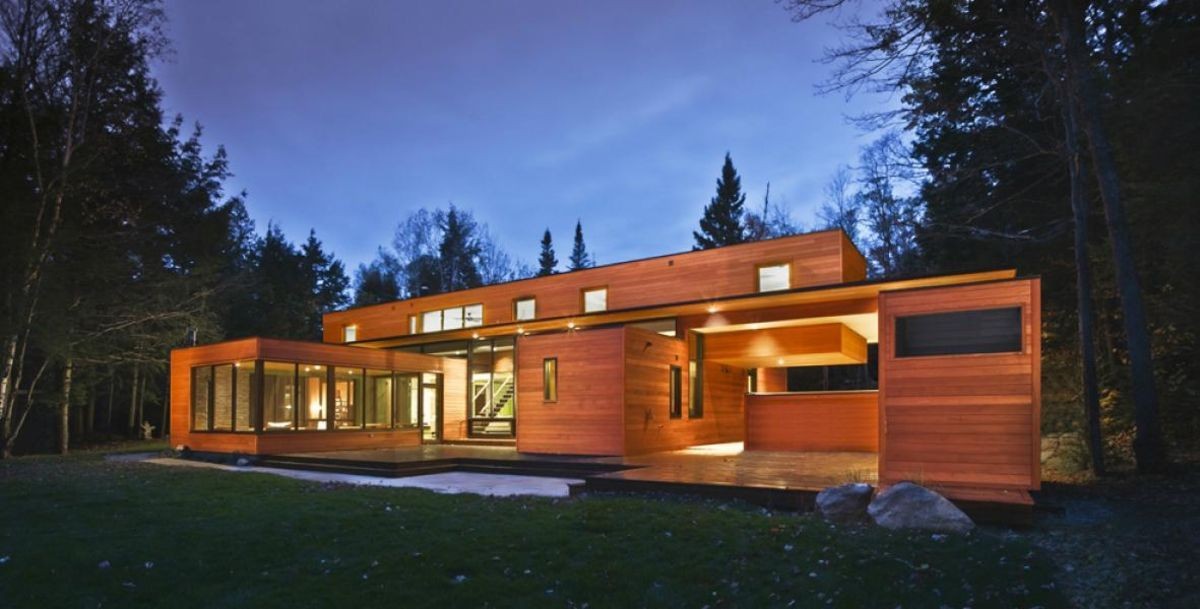Modern facade materials in architecture and design - timber cladding
Timber cladding is an increasingly popular choice for finishing the outside of commercial and domestic properties. Otherwise known as timber weatherboarding or timber siding, it is an attractive and economical way to end the exterior of both old and new buildings. Naturally durable woods such as larch and cedar provide a hard-wearing, protective layer against the elements, and they are excellent insulators. Many different species of wood are suitable for exterior timber cladding because of their natural resistance to decay. Imported timbers such as Canadian western red cedar and Siberian larch are increasingly being specified for cladding where a more modern, contemporary appearance is desired.
Larch siding

Larch is sometimes called a Russian wood.
Timber cladding can be used in many forms to achieve a wide variety of patterns, textures, and colours, ranging from the use of shingles or shakes to prefinished panels. However, the most common form of timber cladding consists of boards laid vertically, diagonally, or horizontally with either overlapping or flush faces. Suppose one adds to this the possible variations in board width, surface finish, profile shape, joint design, a wide range of colours, and the texture and character of unfinished wood. In that case, the versatility of timber cladding becomes very apparent.
Timber's low thermal conductivity is much lower than steel and concrete.
Pros
Ease of Installation -The relatively lightweight nature of timber enables quick and effective installation of cladding.
Durable – Timber cladding can last for several years when it is properly maintained. It has a high impact resistance that helps to reduce damage to your home.
Energy Efficient – Timber has high insulation properties. Its low thermal conductivity is much lower than steel and concrete.
Acoustics – Your choice of siding can help insulate your home. Some materials allow noise to filter right through the walls into the house.
Cons
Painting – Timber cladding requires regular painting or staining to preserve its natural beauty and protect it from the elements.
Exposure to Elements – Timber is a natural material, and as such, is subject to a loss of quality or damage after being exposed to the elements for a long time.
Fire Risk – Even if timber cladding is painted or sealed, it still risks spreading fire, as it is a flammable material.
House with a facade of red Canadian cedar

Modern houses look great with timber cladding
OUR RECOMMENDATIONS
We invite you to visit our other site, EPLAN.HOUSE, where you will find 4,000 selected house plans from around the world in various styles, as well as recommendations for building a house.